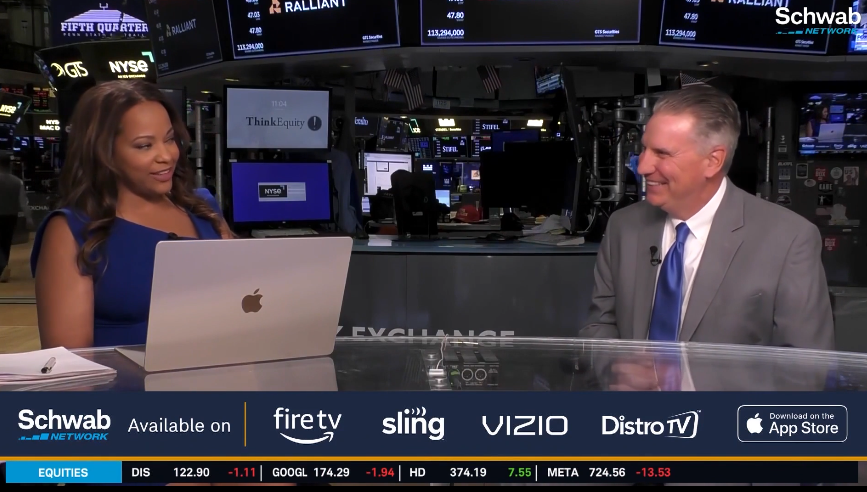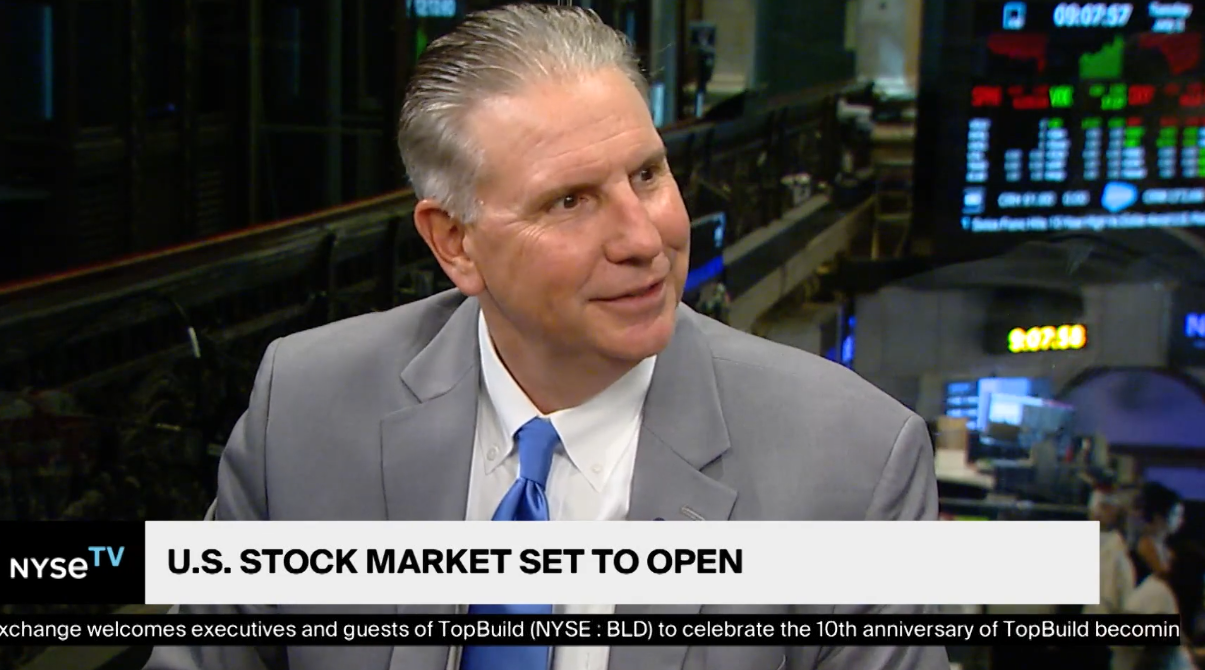
Stocks Gain on Economic Data while North Korea Tensions Mount
Market Overview

Sources: Sources for data in tables: Equity Market and Fixed Income returns are from JP Morgan as of 9/01/17. Rates and Economic Calendar Data from Bloomberg as of 9/05/17. International developed markets measured by the MSCI EAFE Index, emerging markets measured by the MSCI EM Index. Sector performance is measured using GICS methodology. S&P 500 earnings data from Factset as of 9/01/17.
Happening Now
U.S. stocks had one of their best weeks of the year as geo-political concerns took a back seat to strong economic data. The S&P 500 Index gained 1.4%, the Russell Midcap Index gained 1.5%, and the Russell 2000 Index, a gauge of small cap companies, advanced 2.7%. On the international front, developed markets ended the week 0.6% higher while emerging markets moved 0.7% to the upside.
Last week was a busy one for those with an eye on economic data. A revised estimate of second quarter U.S. Gross Domestic Product (GDP) was released last Wednesday and showed that the economy grew at an annualized pace of 3.0% during the quarter, besting consensus calls for a 2.8% gain. In addition to GDP, monthly reports on consumer confidence, personal income, and employment were also released. Despite saber rattling with North Korea, U.S. consumers have refused to let their confidence be shaken. The Conference Board’s consumer confidence index moved higher to a 122.9, the highest reading since March. The monthly personal income report showed both income and inflation growing only moderately and in line with expectations. While there are a few different means of calculating inflation, the Federal Reserve prefers personal consumption expenditures (PCE) when making monetary policy decisions. PCE Inflation is released alongside personal income and showed prices rose 1.4% versus last year, below the Fed’s target of 2%. Inflation, which typically increases with growth, has been absent and is one of the main contributors to the persistently low level of interest rates. Finally, the monthly employment report released Friday showed that 156,000 jobs were added during August, missing estimates which called for 180,000 new hires. This led to a slight tick up in the unemployment rate from 4.3% to 4.4%.
While U.S. economic data was highlighted above, investors also need to consider the health of the global economy. Fortunately, the global economy is experiencing a period of synchronized growth. This is the first time since 2010 that most major countries and economies are advancing, albeit at different rates, at the same time.
Uncertainties continue to persist, however, and include the ongoing geo-political issues stemming from North Korea, as well as the U.S. Government’s upcoming debt ceiling negotiations. Goldman Sachs pointed out in note during the week that, historically, volatility has been higher from September to November than during other months of the year. Couple this with already high valuations in most asset classes and investors would be wise, in our view, to ensure that some form of downside protection is in place within their own respective portfolios. We continue to suggest that we are in the midst of secular bull market but recognize the potential for intermittent bouts of volatility.
Important Information and Disclaimers
Disclosures: Hennion & Walsh is the sponsor of SmartTrust® Unit Investment Trusts (UITs). For more information on SmartTrust® UITs, please visit www.smarttrustuit.com. The overview above is for informational purposes and is not an offer to sell or a solicitation of an offer to buy any SmartTrust® UITs. Investors should consider the Trust’s investment objective, risks, charges and expenses carefully before investing. The prospectus contains this and other information relevant to an investment in the Trust and investors should read the prospectus carefully before they invest.
Investing in foreign securities presents certain risks not associated with domestic investments, such as currency fluctuation, political and economic instability, and different accounting standards. This may result in greater share price volatility. These risks are heightened in emerging markets.
There are special risks associated with an investment in real estate, including credit risk, interest rate fluctuations and the impact of varied economic conditions. Distributions from REIT investments are taxed at the owner’s tax bracket.
The prices of small company and mid cap stocks are generally more volatile than large company stocks. They often involve higher risks because smaller companies may lack the management expertise, financial resources, product diversification and competitive strengths to endure adverse economic conditions.
Investing in commodities is not suitable for all investors. Exposure to the commodities markets may subject an investment to greater share price volatility than an investment in traditional equity or debt securities. Investments in commodities may be affected by changes in overall market movements, commodity index volatility, changes in interest rates or factors affecting a particular industry or commodity.
Products that invest in commodities may employ more complex strategies which may expose investors to additional risks.
Investing in fixed income securities involves certain risks such as market risk if sold prior to maturity and credit risk especially if investing in high yield bonds, which have lower ratings and are subject to greater volatility. All fixed income investments may be worth less than original cost upon redemption or maturity. Bond Prices fluctuate inversely to changes in interest rates. Therefore, a general rise in interest rates can result in the decline of the value of your investment.
Definitions
MSCI- EAFE: The Morgan Stanley Capital International Europe, Australasia and Far East Index, a free float-adjusted market capitalization index that is designed to measure developed-market equity performance, excluding the United States and Canada.
MSCI-Emerging Markets: The Morgan Stanley Capital International Emerging Market Index, is a free float-adjusted market capitalization index that is designed to measure the performance of global emerging markets of about 25 emerging economies.
Russell 3000: The Russell 3000 measures the performance of the 3000 largest US companies based on total market capitalization and represents about 98% of the investible US Equity market.
ML BOFA US Corp Mstr [Merill Lynch US Corporate Master]: The Merrill Lynch Corporate Master Market Index is a statistical composite tracking the performance of the entire US corporate bond market over time.
ML Muni Master [Merill Lynch US Corporate Master]: The Merrill Lynch Municipal Bond Master Index is a broad measure of the municipal fixed income market.
Investors cannot directly purchase any index.
LIBOR, London Interbank Offered Rate, is the rate of interest at which banks offer to lend money to one another in the wholesale money markets in London.
The Dow Jones Industrial Average is an unweighted index of 30 “blue-chip” industrial U.S. stocks.
The S&P Midcap 400 Index is a capitalization-weighted index measuring the performance of the mid-range sector of the U.S. stock market, and represents approximately 7% of the total market value of U.S. equities. Companies in the Index fall between S&P 500 Index and the S&P SmallCap 600 Index in size: between $1-4 billion.
DJ Equity REIT Index represents all publicly traded real estate investment trusts in the Dow Jones U.S. stock universe classified as Equity REITs according to the S&P Dow Jones Indices REIT Industry Classification Hierarchy. These companies are REITSs that primarily own and operate income-producing real estate.



